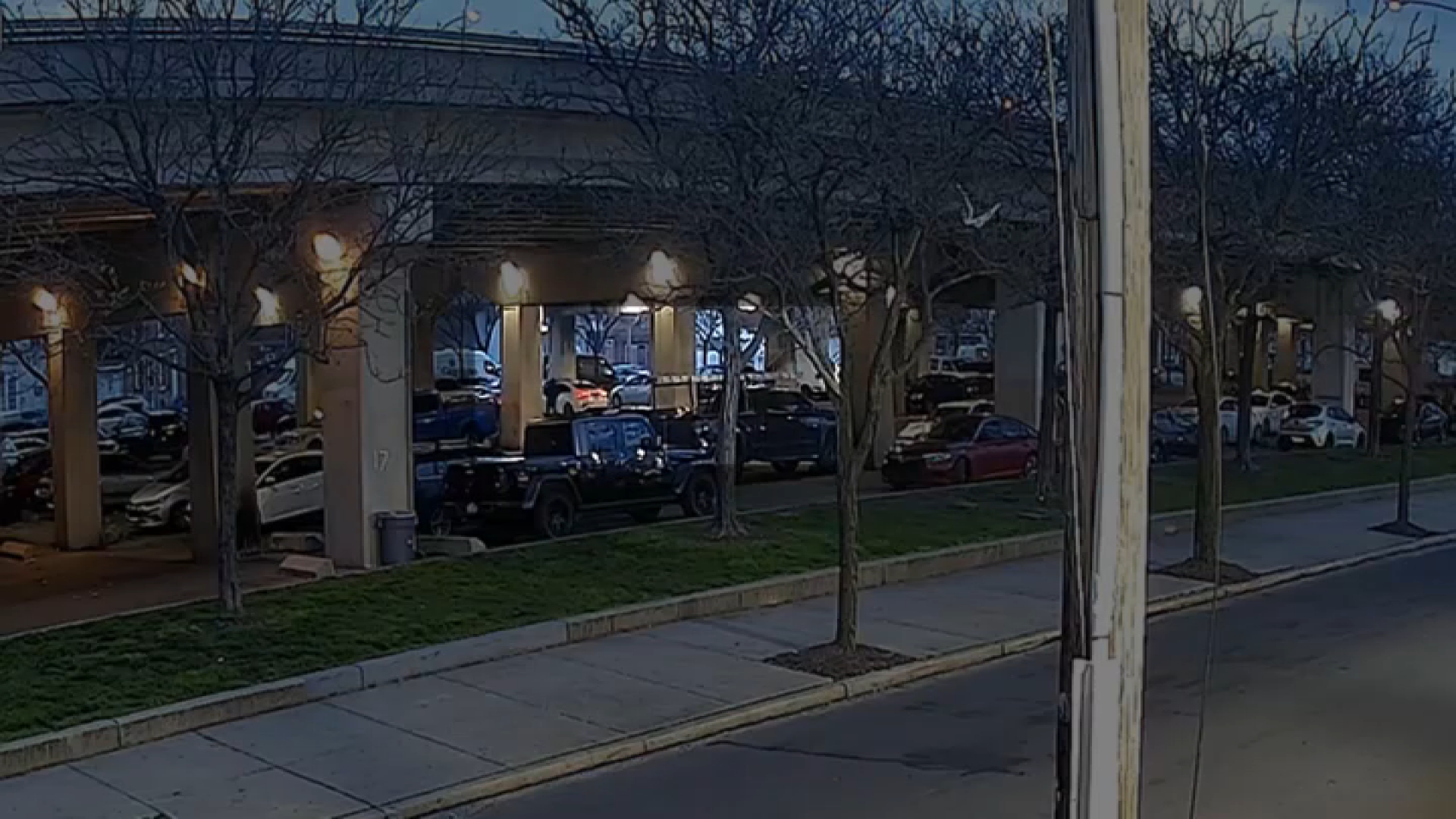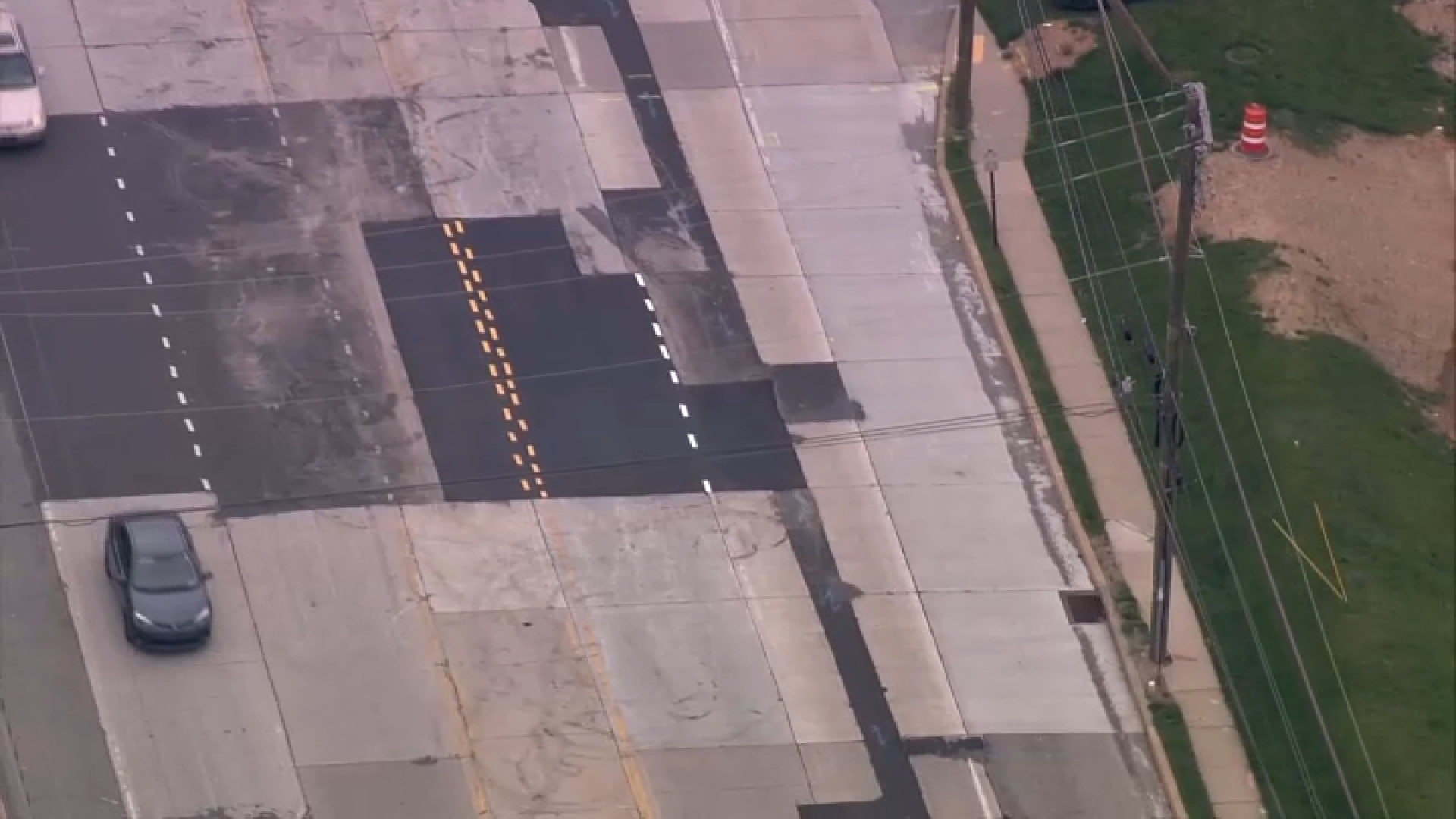In 2009, George Beerley was operating heavy equipment at a construction site near Doylestown, Pa., when his machinery jammed. He flipped up the safety bar, which shuts down all mechanical function, to fix the rig. While inside the machine, it suddenly sprang to life, pitching Beerley's body into the air and crushing it.
His ankle was spun around completely.
"I looked at my right foot. Instead of looking at my toe, I was looking at the heel. And it didn't hurt," Beerley remembered. "I'm thinking, wait a minute: something's not right here. How come this doesn't hurt?"
Beerley's foot was the least of his problems. He crushed his thoracic spine, causing him to be paralyzed from the chest down. Now 60 years old, "Moose" — as he's called — is wheelchair-bound, with bladder and bowel ailments, issues with his lungs, and he's prone to develop potentially fatal bedsore infections.
Moose is one of the subjects of a portraiture triptych by the British artist Ian Wright, commissioned by Beerley's workers' compensation lawyers, Pond Lehocky Stern Giordano. Wright took the legal files of three Pond Lehocky clients, torn the papers into small pieces, and reassembled them into portraits. Called "Torn Apart," the portraits reassemble legal briefs and court documents back into the people they represent, people who were literally torn apart.
Barbara Daquilante, a cafeteria worker for 31 years, was hit by a trash truck in the parking lot of the hospital where she worked. Her right leg was degloved. She is now diagnosed with post-traumatic stress disorder.
Francis Elliot, a ticket writer for the Philadelphia Parking Authority, suffered from chronic neck pain due to the portable ticket-writing computer worn around the neck by a strap. After slipping on black ice and falling into a snow bank, he was taken to an emergency room.
Local
Breaking news and the stories that matter to your neighborhood.
"They took an MRI and discovered a herniated disk," said Elliott. "That herniated disk turned into me getting a fusion surgery. After that, I developed incontinence — unable to go to the bathroom or have an erection. In physical therapy, the therapist extended my arm and tore my labrum. I couldn't feel it for all my pain meds. I developed congestive heat failure because they gave me too many fluids."
"Now I have nine herniated disks," said Elliott. "Once one started they all start to go, like a domino effect."
All three subjects are connected by their association with Pond Lehocky, who just moved into new office spaces in Philadelphia's Center City. The firm hangs the commissioned portraits on a large wall adjacent to their lobby, to remind themselves who they are working for.
Workers' compensation law does not allow claimants to sue employers for pain and suffering. Rather, lawyers at Pond Lehocky negotiate with insurance companies to pay for any expenses related to the injury, including medical, therapies, home renovations, transportation, and subsequent complications arising from the initial accident.
It can be a lifelong relationship between lawyer and client, as the suffering can be ongoing.
"I've done surprisingly well," said Beerley maneuvering his motorized wheelchair through the Pond Lehocky offices. "I had a situation where, years ago, I lost a daughter. She was 17 years old and that was the worst thing in my life. This is bad, but it's not as bad as losing my daughter. I think I can handle this. With my daughter's situation I learned to be able to deal with it — I'll never get over it, but I learned to deal with it. This, here, I learned to deal with it."



